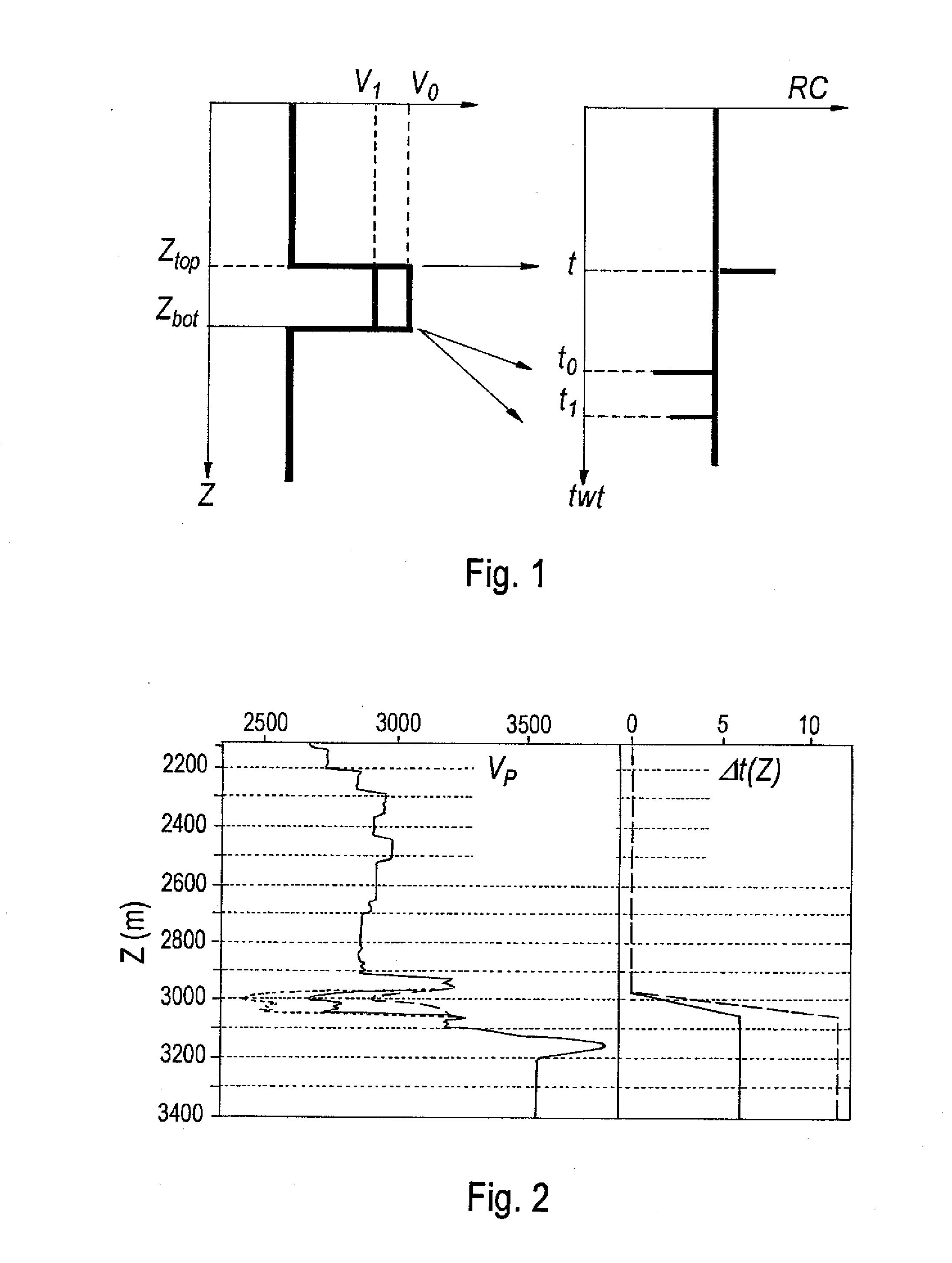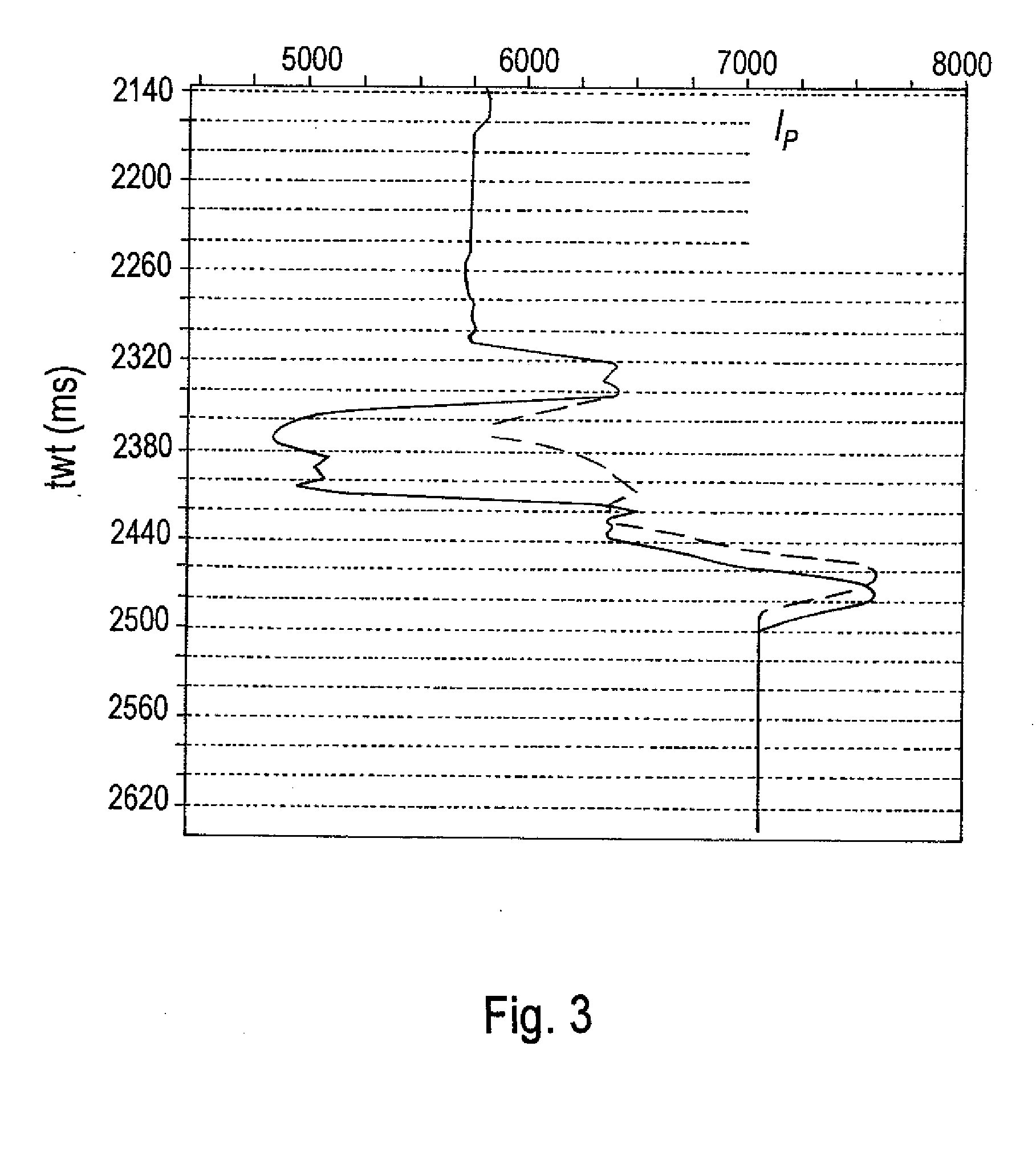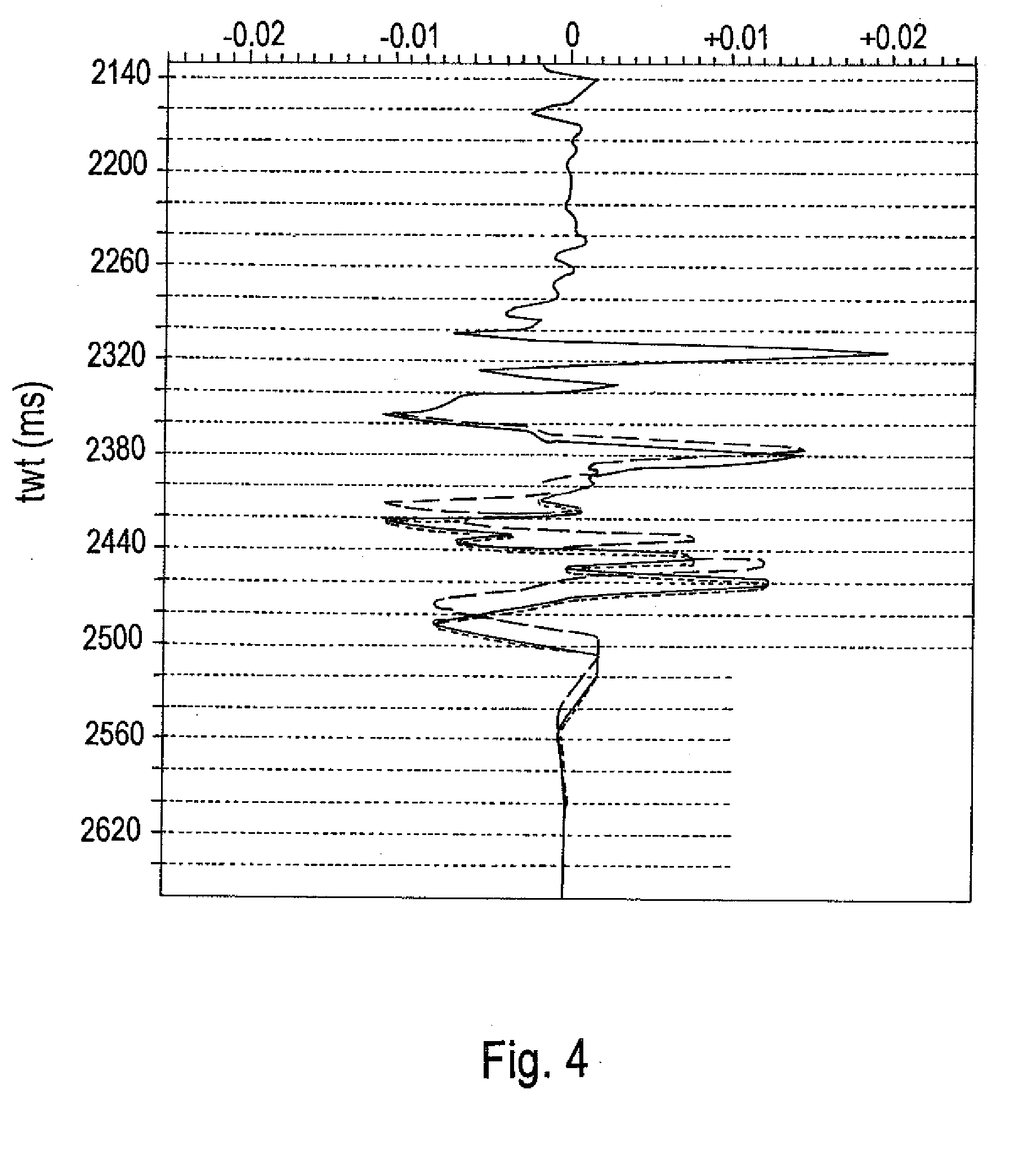Method of Joint Inversion of Seismic Data Represented on Different Time Scales
a seismic data and time scale technology, applied in the field of geophysics, can solve the problems of difficult interpretation of data based on amplitude differences, difficult interpretation of characteristic differences of two seismic traces, and difficult definition of reliable velocity field with existing techniques
- Summary
- Abstract
- Description
- Claims
- Application Information
AI Technical Summary
Benefits of technology
Problems solved by technology
Method used
Image
Examples
Embodiment Construction
[0044]In rocks, velocity and density are physical parameters depending on the static (porosity, clay content, etc.) and dynamic (fluid content, pressure, temperature, relative permeability, etc.) properties thereof. It follows therefrom that, if these properties change in the subsoil over time, the elastic impedance contrasts in the medium can change, as well as the characteristics of the seismic signals (amplitudes, two-way traveltime of the waves, etc.) measurable at the surface.
[0045]Seismic measurements are thus conventionally used to obtain information on the characteristics of the subsoil formations: lithology, geometry, petrophysical properties, fluid saturations, pressure in the reservoir, etc. Although the vertical frequency resolution of these seismic data is lower than that of well data, they afford the advantage of providing larger-scale lateral information on the characteristics of the explored subsoil. Seismic surveys allow exploring large volumes of the subsoil and ha...
PUM
 Login to View More
Login to View More Abstract
Description
Claims
Application Information
 Login to View More
Login to View More - R&D
- Intellectual Property
- Life Sciences
- Materials
- Tech Scout
- Unparalleled Data Quality
- Higher Quality Content
- 60% Fewer Hallucinations
Browse by: Latest US Patents, China's latest patents, Technical Efficacy Thesaurus, Application Domain, Technology Topic, Popular Technical Reports.
© 2025 PatSnap. All rights reserved.Legal|Privacy policy|Modern Slavery Act Transparency Statement|Sitemap|About US| Contact US: help@patsnap.com



